 “Moses doesn’t like this. Moses doesn’t like this one bit…*“
“Moses doesn’t like this. Moses doesn’t like this one bit…*“
* * * *
Last (Holy) Saturday night, I stayed home and watched part of The Ten Commandments. (Noted further below.) That’s where Moses – as seen in the image above – comes in. And by the way, the “quote” is pure illeism: “the tendency in some individuals to refer to themselves in the third person.” That’s where the imaginary quote – “Moses doesn’t like this. Moses doesn’t like this one bit“ – comes in. (Moses wrote the First Five Books of the Bible in the third person.)
There’s more on that later, but first a note: Many churches this year will celebrate the Annunciation on April 4, instead of the usual March 25. (See e.g. The Lectionary Page.) That is:
The Annunciation would normally fall on Friday, March 25, 2016. That day, however, is Good Friday, and Annunciation is never celebrated during Holy Week. It is transferred, therefore, to Monday, April 4, 2016, the first open day after Easter Sunday.
See also An Annunciation-Good Friday anamoly. Then there’s Easter Season – AND BEYOND, which noted that Easter isn’t just one day, it’s an entire season. (Aka Eastertide.) In turn, Eastertide is defined as that long period – of 50 days – from Easter Sunday to Pentecost. (For more on Pentecost, see Pentecost – “Happy Birthday, Church!”) But before we get into that, I wanted to make a few comments on watching part of The Ten Commandments, the Saturday night before Easter Sunday.
(The real version, the one with Charlton Heston. You know, the one God watches?)
I happened on the movie while channel surfing the night of Holy Saturday. I came in just as Moses was about to learn he wasn’t really a Prince of Egypt, as he’d been taught “since birth.” As the faithful reader will know, that was pretty much the topic of my Lenten meditation.
(Briefly, What did Moses know, and when did he know it?)
 As for watching the movie: Some time and a lot of commercials after I started watching, I realized this Hollywood version was a whole lot longer than the original. So I pulled out my trusty Bible and checked. Sure enough, in a short time I found Exodus 2:11-14, telling what made Moses to flee to Midian (seen at right):
As for watching the movie: Some time and a lot of commercials after I started watching, I realized this Hollywood version was a whole lot longer than the original. So I pulled out my trusty Bible and checked. Sure enough, in a short time I found Exodus 2:11-14, telling what made Moses to flee to Midian (seen at right):
One day, after Moses had grown up, he went out to where his own people were and watched them at their hard labor. He saw an Egyptian beating a Hebrew, one of his own people. Looking this way and that and seeing no one, he killed the Egyptian and hid him in the sand. The next day he went out and saw two Hebrews fighting. He asked the one in the wrong, “Why are you hitting your fellow Hebrew?” The man said, “Who made you ruler and judge over us? Are you thinking of killing me as you killed the Egyptian?” Then Moses was afraid and thought, “What I did must have become known.” (Emphasis added.)
That’s it. That’s all there was to the Bible version. But Cecil B. DeMille turned those four short verses into what seemed like hours of viewing time. (Including commercials of course.) He also added a host of complicated sub-plots that simply aren’t anywhere to be found in the Bible.
From which – I figured – there had to be some kind of object lesson.
Unfortunately, the Bible doesn’t give any clue about how Moses knew those two fighting Hebrews were “his own people.” (That passage follows right after Exodus 2:10, describing how Moses was adopted by Pharaoh’s daughter: “When the child grew older, she took him to Pharaoh’s daughter and he became her son. She named him Moses, saying, ‘I drew him out of the water.'”)
The point of all this being: The 1956 Hollywood-DeMille version of this passage featured a great deal of artistic license, used to fill in a whole lot of blanks in Exodus 2:11-14.
If you don’t believe me, read the Wikipedia plot summary of the movie yourself. You’ll see that the mere summary alone is much longer than the Bible account. For another thing, you’ll see that the movie included a whole lot of drama that the Bible doesn’t even infer.
You’ll see things like Moses growing up to be a winning Egyptian diplomat, and general. (As in “winning a war with Ethiopia.”) Then too there’s the torrid love affair between Moses and Nefretiri. (Played by a very hot Anne Baxter.)
The movie also had Moses meeting “the stone-cutter Joshua.”
Incidentally, Joshua did go on to become “the leader of the Israelite tribes after the death of Moses.” (He also went on to write the sixth book of the Bible, after Moses wrote his “First Five.”) But the movie had Moses meeting Joshua way too early, while the Israelites were still slaves in Egypt. (And it was this Joshua who – in the movie – tells Moses “of the Hebrew God.”)
But in the Bible, Joshua isn’t mentioned until Exodus 17:9. That was way after the Israelites had left Egypt, crossed the Red Sea and wandered around the wilderness a good long while.
For more examples of such artistic license – again – check out the Wiki-plot summary yourself. But here are a few more highlights.
For one thing, while Moses is still an Egyptian general and overlord, he saves an old woman from being crushed to death. That woman – in the movie – turns out to be “his natural mother, Yoshebel.” (Or Jochebed.) Then there’s the matter of the beautiful Hebrew virgin “Lilia.”
In the movie – but not mentioned in the Bible – Lilia is engaged to Joshua. But various bad guys lust after her, like the evil Egyptian “master builder Baka” – played to perfection by Vincent Price – and the “ambitious Hebrew chief overseer Dathan.” (Ditto, by Edward G. Robinson.) Then too, in the movie – but not in the Bible – Moses kills Baka, but only to save Joshua. (In the movie, Joshua attacked Baka to keep him from raping Lilia, and he in turn is rescued by Moses.)
Further, when Moses “confesses” to Joshua that he too is a Hebrew, the ever-sneaky Dathan overhears the confession. In turn Dathan tells Pharoah – Yul Brynner – and in turn is rewarded with his freedom, various “riches” – and his own shot at Lilia.
But in a strange turn of events, when Pharaoh tells Moses to take His People and leave Egypt, Dathan gets turned out with them. From that point on – throughout the film – Dathan remains a “thorn in the flesh” to Moses. (As the Apostle Paul might put it. See 2d Corinthians 12:7.)
There are other examples of such whole cloth and/or artistic license episodes drawn from those four short verses in Exodus 2:11-14. They include but aren’t limited to: 1) A Hebrew woman named Memnet telling Nefretiri that Moses is the son of Hebrew slaves, then being murdered – pushed off a high balcony – by Nefretiri. 2) Moses voluntarily becoming a slave himself – after he wangles the truth from Nefertiri – “to learn more of their lives.” And 3) Moses brought in chains to Pharaoh – played by Yul Brynner – and then “banished to the desert.” (All because Nefertiri is still madly in love with him – Moses – and because Yul Brynner doesn’t want Moses as a martyr to his new queen.)
These then are the few comments I wanted to make, “on watching parts of The Ten Commandments on the Saturday night before Easter Sunday. ”
Which brings up the topic of rabbit trails. Some people say running down a rabbit trail is an “exercise in futility. It means wasting time and energy pursuing leads that go nowhere – or everywhere.” (Obviously, if a rabbit trail “leads everywhere,” it doesn’t waste your time.)
Others take a more broad view, like Today’s Idiom Is … Rabbit Trail. That fellow-blogger noted that while going down rabbit trails in “discussions can be fun and interesting,” they can also “interfere with resolving the topic at hand.” But the blogger noted this distinction:
You would never use that phrase to describe a leisurely trip when you explored a side path and had an interesting adventure. That’s more like taking the road less traveled[,] which is a literary reference to a poem by Robert Frost, “The Road Not Taken.” (E.A.)
So “we” may have ended up going down a rabbit trail here. Or we may have “taken the road less traveled.” Either way, it was fun for me, and I hope for the reader as well.
In the meantime, back to the subject of Easter being “not just one day, but an entire season.” (Also called Eastertide.) I’ll be writing more about Eastertide in the near future. But for now we can look forward to Pentecost – as the Birthday of the Church!
* * * *
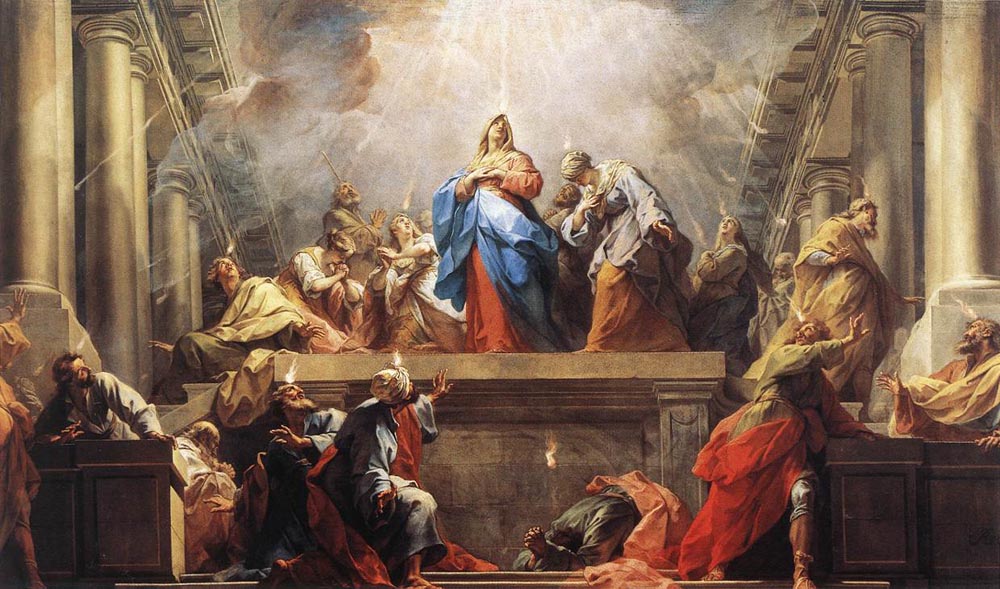 An artist’s depiction of Pentecost – the “birthday of the Church…”
An artist’s depiction of Pentecost – the “birthday of the Church…”
* * * *
I borrowed the idea of the upper image from On Moses and “illeism,” a post I did on May 20, 2014. But to get a larger version of the image I went to pinterest.com/pin/131237776614965931.
Also, as to the asterisk (*), I cut-and-pasted the caption quote for the upper image from Moses and “illeism.” As in: “Moses doesn’t like this. Moses doesn’t like this one bit…“
The map of Moses’ path to Midian is courtesy of treasureboxmy.blogspot.com/2013/12/exodus-moses-flees-to-midian.
Re: “Yoshebel” or Jochebed. Wikipedia noted that the “story of Jochebed is thought to be described in the Book of Exodus (2:1–10) – although she is not explicitly named here.” The article further noted that according to the Torah, she was “a daughter of Levi and mother of Aaron, Miriam and Moses.” Also, she is “praised for her faith in the Epistle to the Hebrews.”
Re: Joshua’s first mention in the Bible. See When is Joshua first mentioned in the Bible – Answers.com.
Re: Rabbit trails. Today’s Idiom also noted this: “If you’ve ever seen a dog follow a real rabbit trail in a field or someone’s back yard, you’ll see where this idiom comes from. The dog will endlessly sniff around in circles, never getting anywhere. And it certainly never finds the rabbit!”
Other links about the “road less traveled” – or more precisely “the road not taken” – include: The road less travelled – meaning and origin, The Road Less Traveled – New York University, The Road Not Taken – Wikipedia, and How to Take the Road Less Traveled: 14 Steps – wikiHow.
The lower image is courtesy of Pentecost – Wikipedia, the free encyclopedia, with the caption: “A Western depiction of the Pentecost, painted by Jean II Restout, 1732.”

 But during all those Good Friday hours of fasting, penance and remembering, don’t forget the real “reason for the season.”
But during all those Good Friday hours of fasting, penance and remembering, don’t forget the real “reason for the season.”
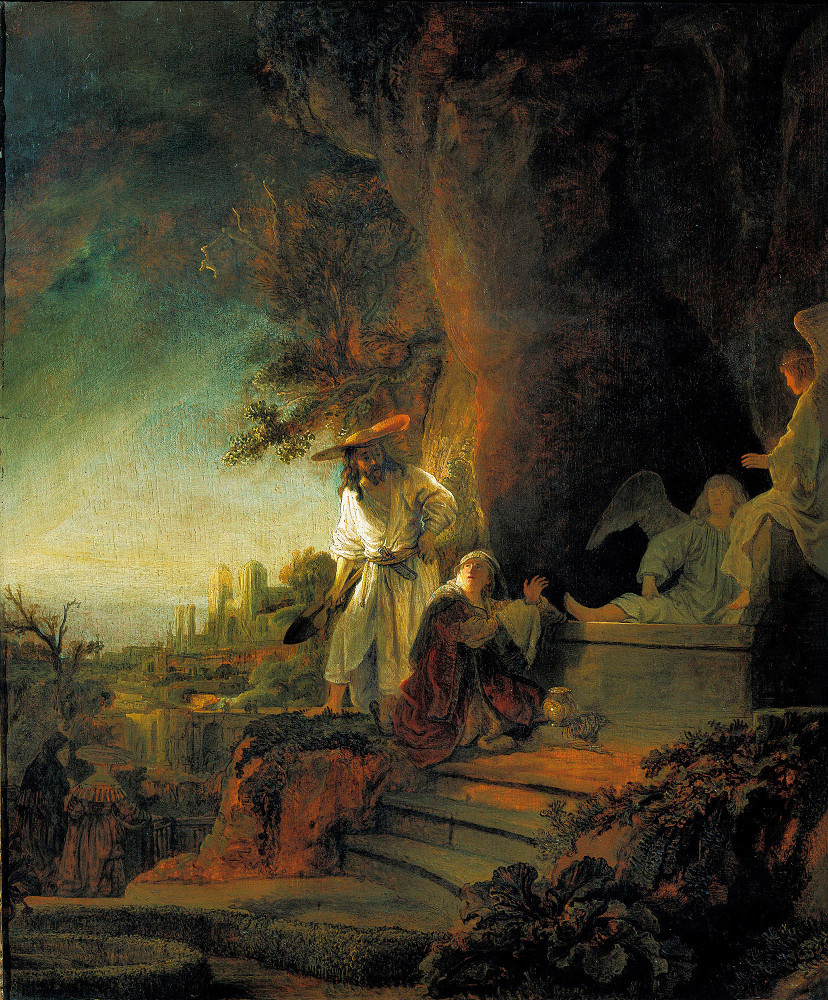
 The post also noted a number of superstitions from
The post also noted a number of superstitions from 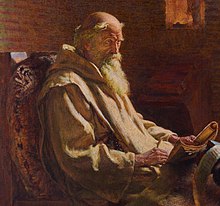 That noted the “
That noted the “

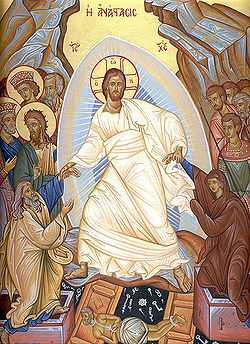 Then too, a discussion of
Then too, a discussion of  Nevertheless,
Nevertheless, 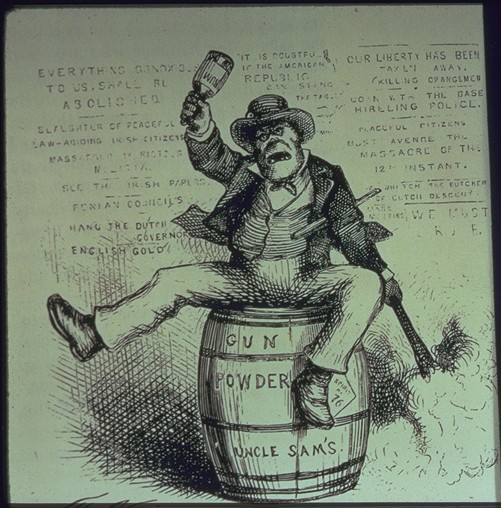 ist detractors who characterized them as drunken, violent, criminalized, and diseased [ – as illustrated at right – ] Irish-Americans were looking for ways to display their civic pride and the strength of their identity… [They] celebrated their Catholicism and patron saint … but they also stressed their patriotic belief in their new home. In essence, St. Patrick’s Day was a public declaration of a hybrid identity [with] a strict adherence to the values and liberties that the U.S. offered them.
ist detractors who characterized them as drunken, violent, criminalized, and diseased [ – as illustrated at right – ] Irish-Americans were looking for ways to display their civic pride and the strength of their identity… [They] celebrated their Catholicism and patron saint … but they also stressed their patriotic belief in their new home. In essence, St. Patrick’s Day was a public declaration of a hybrid identity [with] a strict adherence to the values and liberties that the U.S. offered them. The one thing I do remember is that the book was so fascinating it made me miss a plane to
The one thing I do remember is that the book was so fascinating it made me miss a plane to  But we were discussing
But we were discussing 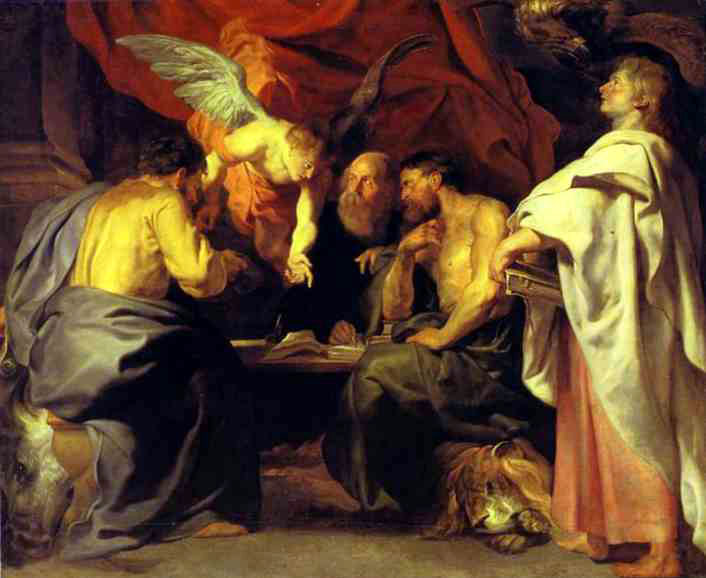
 As noted in earlier posts, my
As noted in earlier posts, my 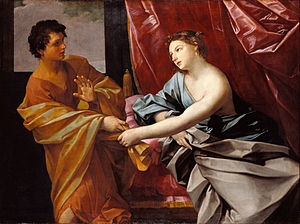 And aside from being a slave, Joseph also had to become pretty much a convicted felon. That is, he got “convicted” after
And aside from being a slave, Joseph also had to become pretty much a convicted felon. That is, he got “convicted” after 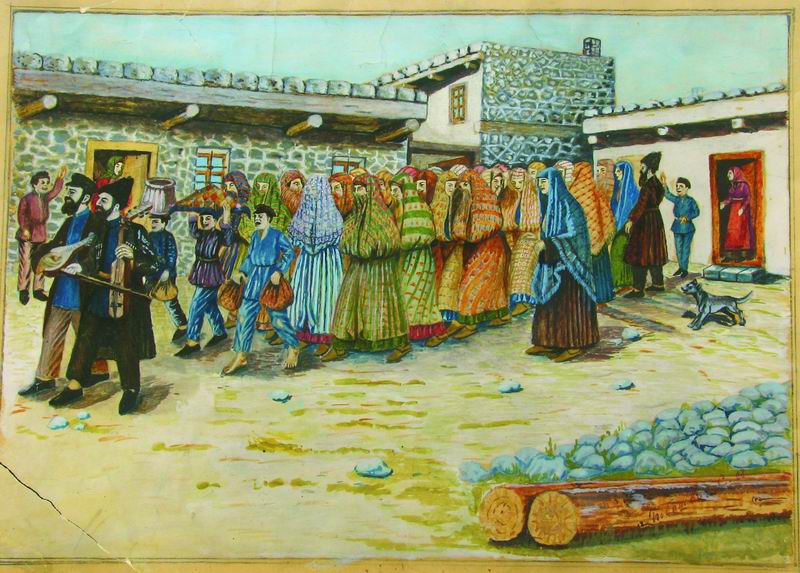 According to the
According to the  n practice back then for really smart people to have their students – and followers – take down what they said. For example, consider what
n practice back then for really smart people to have their students – and followers – take down what they said. For example, consider what 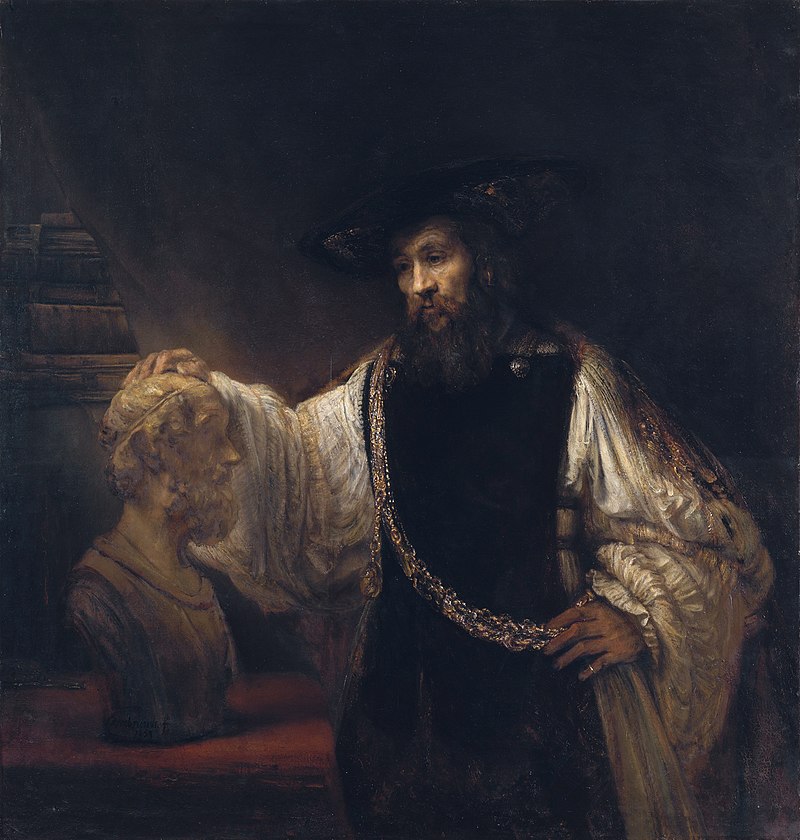 Aristotle [
Aristotle [ Also re: “buck private.” See
Also re: “buck private.” See